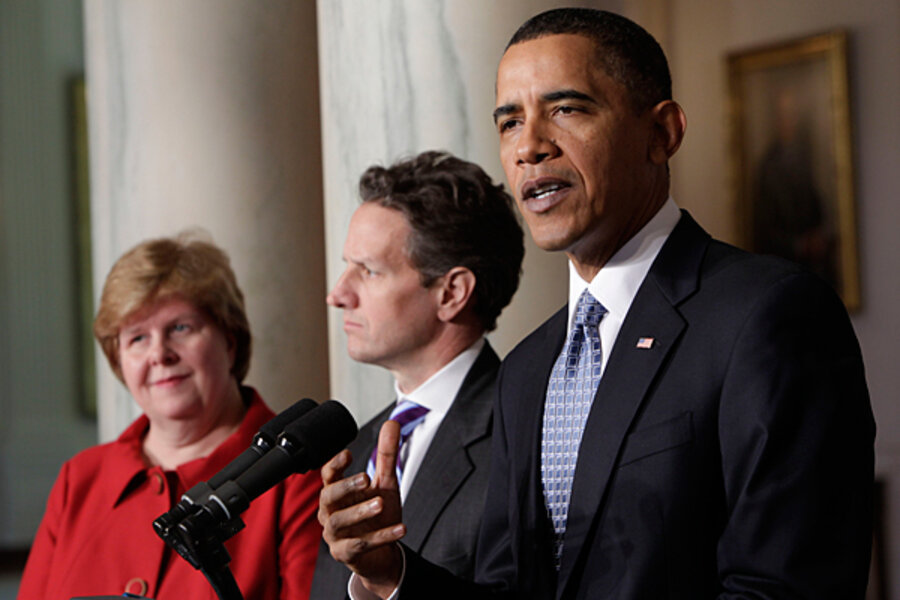Obama budget wouldn't trim trillion-dollar deficits until 2012
Loading...
| Washington
President Obama’s proposed $3.83 trillion 2011 budget is intended to hit a centrist fiscal sweet spot. It is meant to contain enough spending to cushion high unemployment and enough fiscal rigor to reduce long-term federal deficits.
That’s the way administration officials describe the plan, anyway. Republicans insist it is a big-spending scheme that does not make the tough cuts necessary to keep deficits in check.
It is true that there is an inherent tension in trying to rein in budget deficits during a recession, say some fiscal experts.
But there is nothing inconsistent about combining short-term stimulus with long-term fiscal rigor, says Diane Lim Rogers, chief economist for The Concord Coalition, a group which supports efforts to reduce the federal deficit.
Such an apparently contradictory combination “is precisely what current circumstances call for,” says Ms. Rogers. “A contrary strategy – concentrating on stimulus or deficit reduction alone without regard to timing – would carry a higher risk for the economy.”
Austerity and stimulus
Mr. Obama’s new budget preaches austerity, but it also focuses on helping to revive the economy, as he vowed to do in his State of the Union address.
To address the jobs problem, the budget offers tax cuts for businesses (including a $5,000 tax credit for hiring new workers), more help for the unemployed, and a $25 billion injection of cash for state governments.
These measures would take effect this year and boost the deficit by $245 billion during 2010 and 2011.
At the same time, the budget contains a three-year freeze on most non-defense discretionary spending. This move is projected to save $250 billion – though it would do so over 10 years, not three.
It also proposes to boost taxes on the wealthiest Americans by allowing President Bush’s tax cuts to expire for families with incomes of over $250,000 annually. This would provide Uncle Sam with an extra $700 billion in revenue during the next decade.
“We’re putting the nation back on a path to fiscal security,” said Office of Management and Budget director Peter Orszag at a budget briefing.
Under Obama’s plan, spending would rise about 3 percent in 2011, to $3.83 trillion. The projected deficit next fiscal year would be $1.27 trillion – the third straight trillion-dollar dose of red ink.
In 2012, the deficit would fall to $828 billion, under projections contained in the just-released budget. By 2015, the deficit would be equivalent to about 3.6 percent of US gross domestic product, down from the current level of about 10 percent of GDP.
Everything can change
It’s important to remember that this budget is just a proposal, and that Congress will now grind it up in the long appropriations process, making such changes as lawmakers see fit.
Also, circumstances change every year. Next year, Obama will be back with more proposals, which might be very different from the ones submitted today.
That makes long-term projections in Obama’s just-submitted plan guesses as much as promises, notes Chris Edwards, director of tax policy studies at the libertarian Cato Institute.
“An administration’s promised spending beyond the first year [of a budget] is meaningless,” says Edwards.
-----
Follow us on Twitter.





